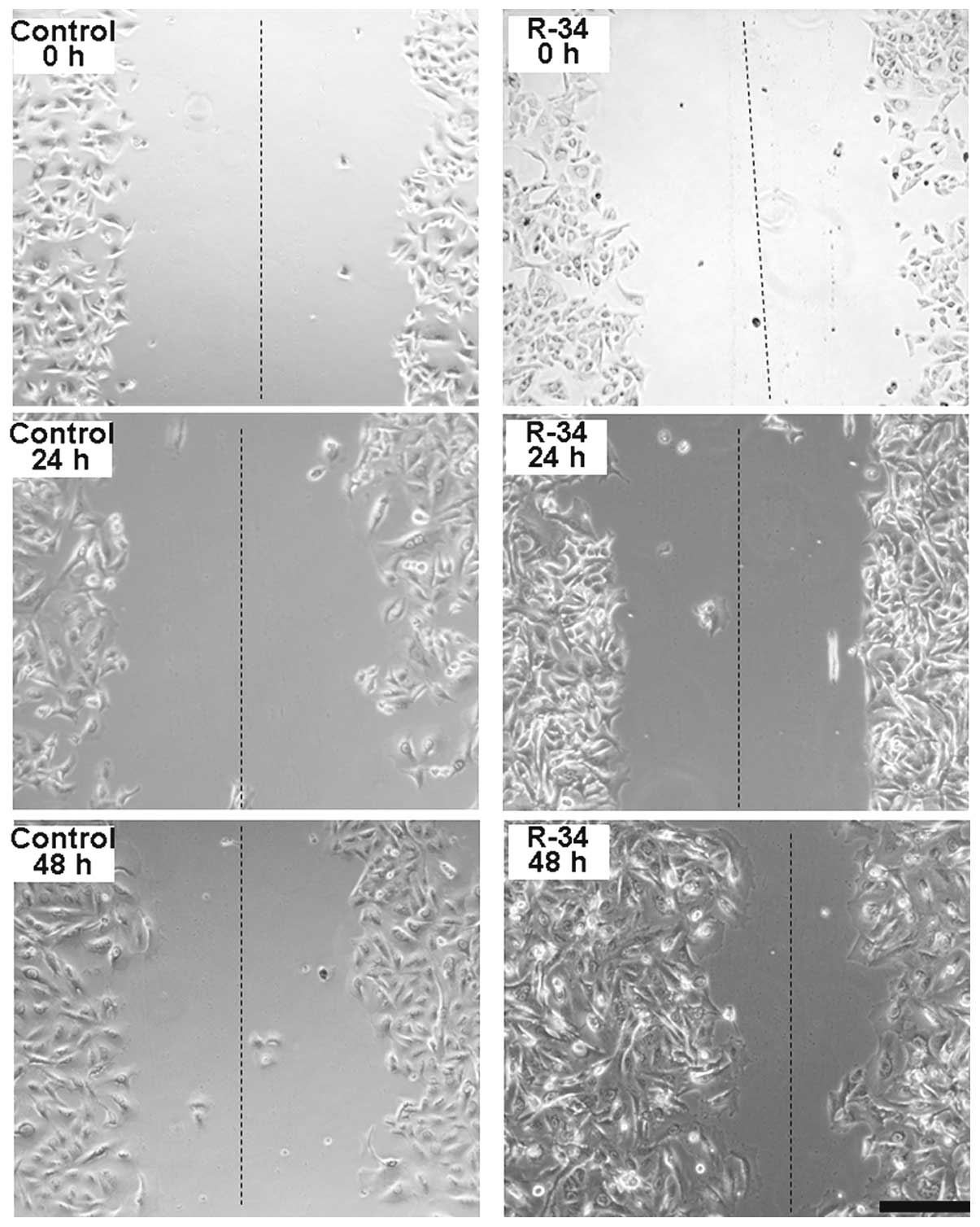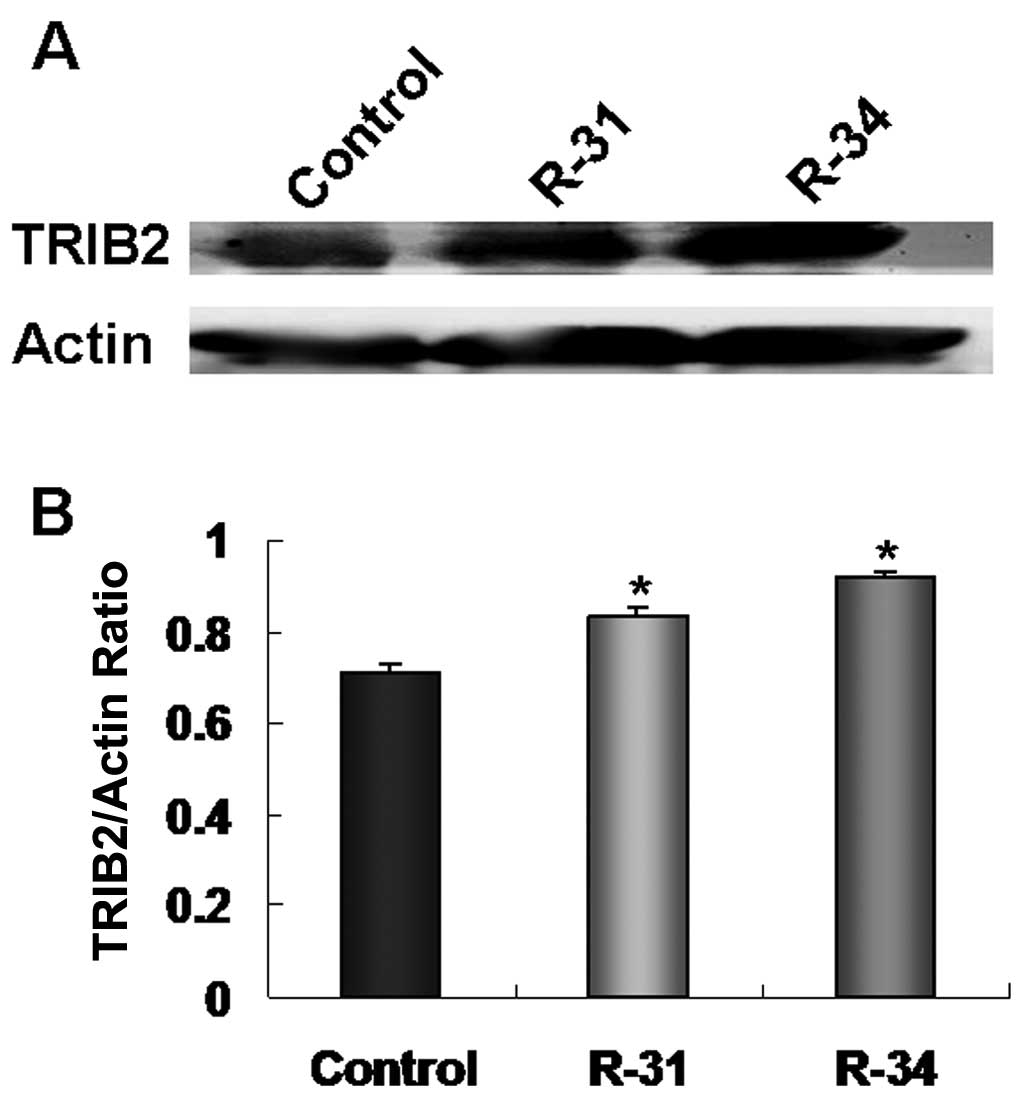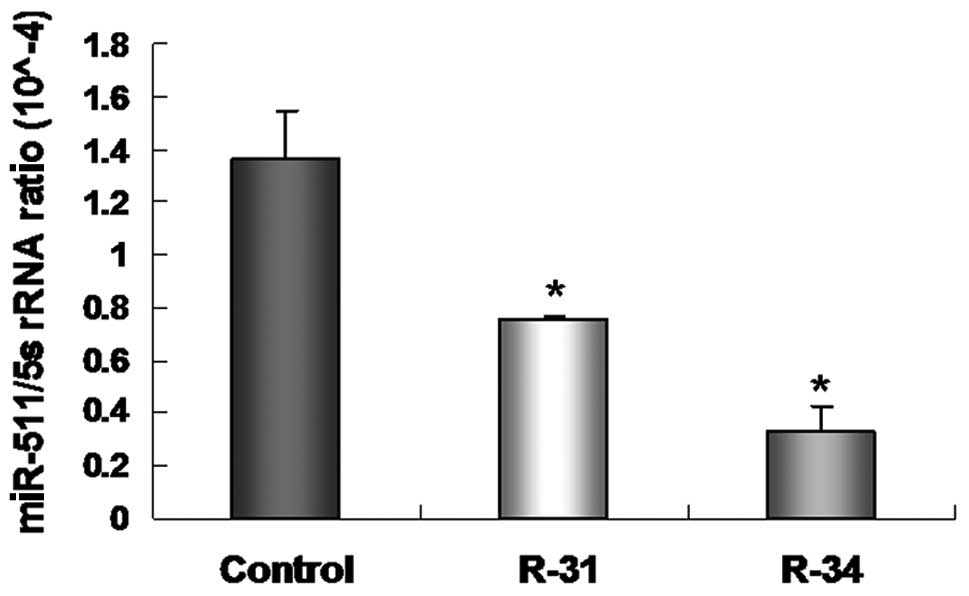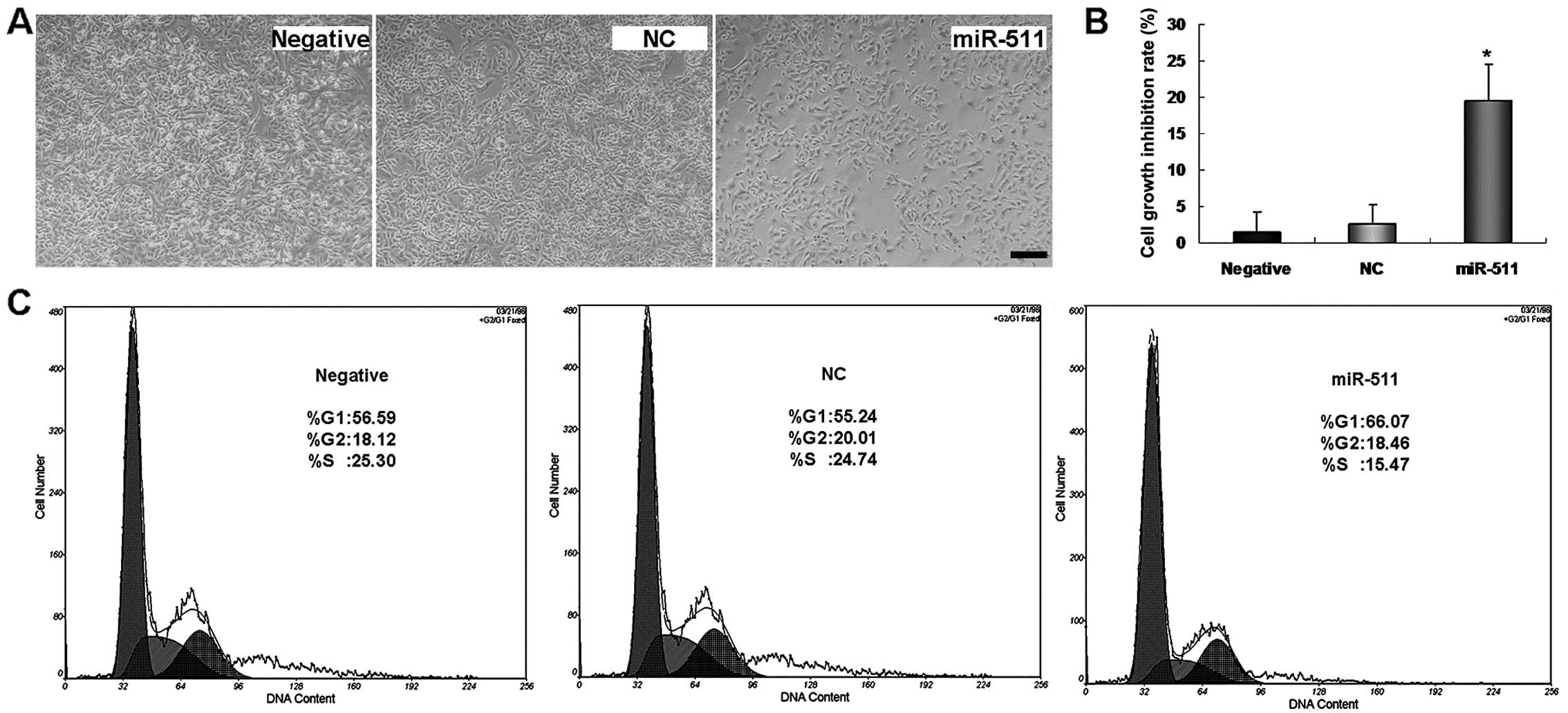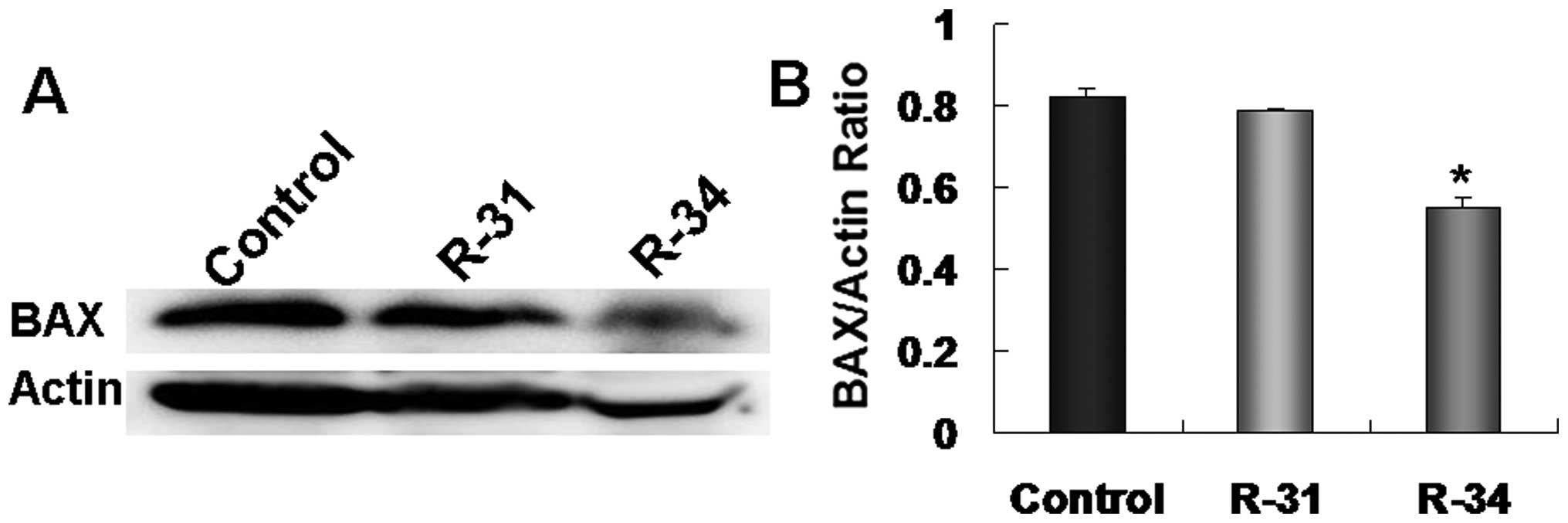|
1
|
Mokdad AH, Marks JS, Stroup DF and
Gerberding JL: Actual causes of death in the United States, 2000.
JAMA. 291:1238–1245. 2004. View Article : Google Scholar
|
|
2
|
Centers for Disease Control and
Prevention. Tobacco use among adults - United States, 2005. MMWR
Morb Mortal Wkly Rep. 55:1145–1148. 2006.
|
|
3
|
Tyldesley S, Boyd C, Schulze K, Walker H
and Mackillop WJ: Estimating the need for radiotherapy for lung
cancer: an evidence-based, epidemiologic approach. Int J Radiat
Oncol Biol Phys. 49:973–985. 2001. View Article : Google Scholar : PubMed/NCBI
|
|
4
|
Dillman RO, Herndon J, Seagren SL, Eaton
WL Jr and Green MR: Improved survival in stage III non-small-cell
lung cancer: seven-year follow-up of cancer and leukemia group B
(CALGB) 8433 trial. J Natl Cancer Inst. 88:1210–1215.
1996.PubMed/NCBI
|
|
5
|
Bradley JD, Paulus R, Graham MV, et al:
Phase II trial of postoperative adjuvant paclitaxel/carboplatin and
thoracic radiotherapy in resected stage II and IIIA non-small-cell
lung cancer: promising long-term results of the Radiation Therapy
Oncology Group - RTOG 9705. J Clin Oncol. 23:3480–3487. 2005.
View Article : Google Scholar
|
|
6
|
Biard DS, Martin M, Rhun YL, et al:
Concomitant p53 gene mutation and increased radiosensitivity
in rat lung embryo epithelial cells during neoplastic development.
Cancer Res. 54:3361–3364. 1994.PubMed/NCBI
|
|
7
|
Wang H, Yu JM, Yang GR, et al: Further
characterization of the epidermal growth factor receptor ligand
11C-PD153035. Chin Med J. 120:960–964. 2007.PubMed/NCBI
|
|
8
|
Xu QY, Gao Y, Liu Y, Yang WZ and Xu XY:
Identification of differential gene expression profiles of
radioresistant lung cancer cell line established by fractionated
ionizing radiation in vitro. Chin Med J. 121:1830–1837.
2008.PubMed/NCBI
|
|
9
|
Westphal CH, Rowan S, Schmaltz C, Elson A,
Fisher DE and Leder P: atm and p53 cooperate in
apoptosis and suppression of tumorigenesis, but not in resistance
to acute radiation toxicity. Nat Genet. 16:397–401. 1997.
View Article : Google Scholar
|
|
10
|
Bartel DP: MicroRNAs: genomics,
biogenesis, mechanism, and function. Cell. 116:281–297. 2004.
View Article : Google Scholar : PubMed/NCBI
|
|
11
|
Calin GA and Croce CM: MicroRNA-cancer
connection: the beginning of a new tale. Cancer Res. 66:7390–7394.
2006. View Article : Google Scholar : PubMed/NCBI
|
|
12
|
Calin GA, Garzon R, Cimmino A, Fabbri M
and Croce CM: MicroRNAs and leukemias: how strong is the
connection? Leuk Res. 30:653–655. 2006. View Article : Google Scholar : PubMed/NCBI
|
|
13
|
Hammond SM: MicroRNAs as oncogenes. Curr
Opin Genet Dev. 16:4–9. 2006. View Article : Google Scholar
|
|
14
|
Weidhaas JB, Babar I, Nallur SM, et al:
MicroRNAs as potential agents to alter resistance to cytotoxic
anticancer therapy. Cancer Res. 67:11111–11116. 2007. View Article : Google Scholar : PubMed/NCBI
|
|
15
|
Jeong SH, Wu HG and Park WY: LIN28B
confers radio-resistance through the posttranscriptional control of
KRAS. Exp Mol Med. 41:912–918. 2009. View Article : Google Scholar : PubMed/NCBI
|
|
16
|
Zhang C, Chi YL, Wang PY, et al: miR-511
and miR-1297 inhibit human lung adenocarcinoma cell proliferation
by targeting oncogene TRIB2. PLoS One. 7:e460902012.
View Article : Google Scholar : PubMed/NCBI
|
|
17
|
Li YJ, Zhang YX, Wang PY, et al:
Regression of A549 lung cancer tumors by anti-miR-150 vector. Oncol
Rep. 27:129–134. 2012.PubMed/NCBI
|
|
18
|
Yan L, Xu G, Qiao T, Chen W, Yuan S and Li
X: CpG-ODN 7909 increases radiation sensitivity of
radiation-resistant human lung adenocarcinoma cell line by
overexpression of Toll-like receptor 9. Cancer Biother Radiopharm.
28:559–564. 2013. View Article : Google Scholar : PubMed/NCBI
|
|
19
|
Wang PY, Sun YX, Zhang S, et al: Let-7c
inhibits A549 cell proliferation through oncogenic TRIB2 related
factors. FEBS Lett. 587:2675–2681. 2013. View Article : Google Scholar : PubMed/NCBI
|
|
20
|
Kiss-Toth E, Bagstaff SM, Sung HY, et al:
Human tribbles, a protein family controlling mitogen-activated
protein kinase cascades. J Biol Chem. 279:42703–42708. 2004.
View Article : Google Scholar : PubMed/NCBI
|
|
21
|
Lee JH, Lee SW, Choi SH, Kim SH, Kim WJ
and Jung JY: p38 MAP kinase and ERK play an important role in
nitric oxide-induced apoptosis of the mouse embryonic stem cells.
Toxicol In Vitro. 27:492–498. 2013. View Article : Google Scholar : PubMed/NCBI
|
|
22
|
Ogawa K, Utsunomiya T, Mimori K, et al:
Differential gene expression profiles of radioresistant pancreatic
cancer cell lines established by fractionated irradiation. Int J
Oncol. 28:705–713. 2006.PubMed/NCBI
|
|
23
|
Volinia S, Calin GA, Liu CG, et al: A
microRNA expression signature of human solid tumors defines cancer
gene targets. Proc Natl Acad Sci USA. 103:2257–2261. 2006.
View Article : Google Scholar : PubMed/NCBI
|
|
24
|
Lanza G, Ferracin M, Gafà R, et al:
mRNA/microRNA gene expression profile in microsatellite unstable
colorectal cancer. Mol Cancer. 6:542007. View Article : Google Scholar : PubMed/NCBI
|
|
25
|
Chung WM, Chang WC, Chen L, et al:
MicroRNA-21 promotes the ovarian teratocarcinoma PA1 cell line by
sustaining cancer stem/progenitor populations in vitro. Stem Cell
Res Ther. 4:882013. View
Article : Google Scholar : PubMed/NCBI
|
|
26
|
Takagi T, Iio A, Nakagawa Y, Naoe T,
Tanigawa N and Akao Y: Decreased expression of microRNA-143 and
-145 in human gastric cancers. Oncology. 77:12–21. 2009. View Article : Google Scholar : PubMed/NCBI
|
|
27
|
Tarasov V, Jung P, Verdoodt B, et al:
Differential regulation of microRNAs by p53 revealed by massively
parallel sequencing: miR-34a is a p53 target that induces apoptosis
and G1-arrest. Cell Cycle. 6:1586–1593. 2007. View Article : Google Scholar : PubMed/NCBI
|
|
28
|
Chao TF, Xiong HH, Liu W, Chen Y and Zhang
JX: MiR-21 mediates the radiation resistance of glioblastoma cells
by regulating PDCD4 and hMSH2. J Huazhong Univ Sci Technolog Med
Sci. 33:525–529. 2013. View Article : Google Scholar : PubMed/NCBI
|
|
29
|
Shi Y, Zhang X, Tang X, Wang P, Wang H and
Wang Y: MiR-21 is continually elevated long-term in the brain after
exposure to ionizing radiation. Radiat Res. 177:124–128. 2012.
View Article : Google Scholar : PubMed/NCBI
|
|
30
|
Saleh AD, Savage JE, Cao L, et al:
Cellular stress induced alterations in microRNA let-7a and let-7b
expression are dependent on p53. PLoS One. 6:e244292011. View Article : Google Scholar : PubMed/NCBI
|
|
31
|
Hannon MM, Lohan F, Erbilgin Y, et al:
Elevated TRIB2 with NOTCH1 activation in
paediatric/adult T-ALL. Br J Haematol. 158:626–634. 2012.
|
|
32
|
Wang J, Park JS, Wei Y, et al: TRIB2 acts
downstream of Wnt/TCF in liver cancer cells to regulate YAP and
C/EBPα function. Mol Cell. 51:211–225. 2013.PubMed/NCBI
|
|
33
|
Wei SC, Rosenberg IM, Cao Z, Huett AS,
Xavier RJ and Podolsky DK: Tribbles 2 (Trib2) is a novel regulator
of toll-like receptor 5 signaling. Inflamm Bowel Dis. 18:877–888.
2012. View Article : Google Scholar : PubMed/NCBI
|
|
34
|
Csuka O, Remenár E, Koronczay K,
Doleschall Z and Németh G: Predictive value of p53, Bcl2 and bax in
the radiotherapy of head and neck cancer. Pathol Oncol Res.
3:204–210. 1997. View Article : Google Scholar : PubMed/NCBI
|
|
35
|
Kim KW, Mutter RW, Cao C, et al: Autophagy
for cancer therapy through inhibition of pro-apoptotic proteins and
mammalian target of rapamycin signaling. J Biol Chem.
281:36883–36890. 2006. View Article : Google Scholar : PubMed/NCBI
|















